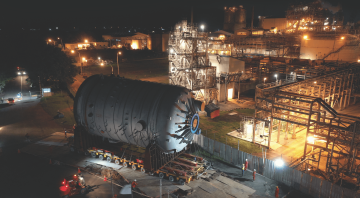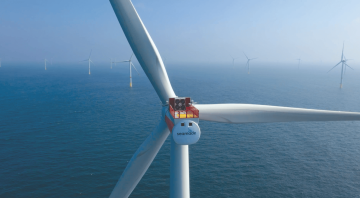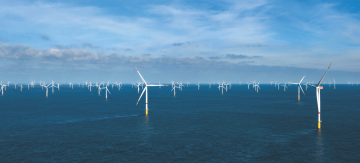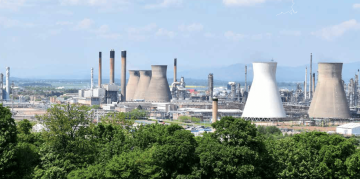CO2
Gas will be captured and stored permanently under seabed
2030
INEOS will be able to cut emissions by more than 60%
£1billion
Massive investment is needed to move to the production and use of hydrogen
Hydrogen barge
INOVYN is working with a Dutch company to develop Europe’s first-ever hydrogen-fuelled barge to transport chemicals. The barge currently runs on oil. But VT Group is stripping out the combustion engine and fitting the barge with hydrogen technology, so that it can run on unwanted, low-carbon hydrogen produced by INOVYN during its chemical manufacturing processes.
“Our strong relationship with INOVYN has always enabled us to innovate,” said Niels Groenewold, CEO of VT Group.
Once operational, the barge will ship vital raw materials for INOVYN between its Antwerp and Jemeppe sites in Belgium.
Wouter Bleukx, Hydrogen Business Manager for INOVYN, said hydrogen-powered transport was going to play a critical role in Europe’s journey to net-zero. “This alone will cut CO2 emissions by about 1,000 tonnes a year,” he said.
ANOTHER significant step has been taken by INEOS to ensure the sustainable future of its businesses at Grangemouth in Scotland. The world’s best engineering companies are currently tendering for the right to design a world-scale, low-carbon hydrogen production plant at the UK site.
“This is an important step forward in our road map to net zero by 2045,” said Andrew Gardner, CEO and Chairman at Grangemouth.
“It will help us to reduce our own emissions, create products that will help others to reduce their emissions and allow us to play a leading role in a clean hydrogen revolution.”
Once built, the new plant will produce hydrogen from natural gas, capturing the CO2 by-product.
It will enable the businesses at Grangemouth to replace hydrocarbon fuels, such as natural gas, with clean low-carbon hydrogen to power its processes and manufacture vital chemicals, which are used in everything from bottles, cables and insulation to food packaging and medicines.
The plans underpin INEOS’ commitment to the Acorn Project - Scotland’s first, large-scale carbon capture and storage project.
The CO2 will be transported through existing pipelines and permanently and securely stored in rock formations under the North Sea.
Stuart Collings, CEO INEOS O&P UK., said the carbon capture and storage project was an important part of both Scotland’s and the UK’s drive to net zero.
“Our investment in a hydrogen plant, alongside access to the Acorn Project, will result in reductions of more than one million tonnes of carbon dioxide emissions each year from the site,” he said.
INEOS is determined to build on the significant CO2 reductions already made since it acquired the Grangemouth site from BP in 2005 – and cut emissions by more than 60% by 2030.
It is currently investing in a new, highly-efficient energy plant, which is under construction and due to be commissioned in 2024.
That plant will drive down emissions by at least 150,000 tonnes a year.
Once the site is producing clean, low-carbon hydrogen, this new power plant will be supplied with hydrogen which will further reduce CO2 emissions.
Access to locally-produced hydrogen will also benefit other assets at the Grangemouth site, fuelling the existing combined heat and power plant, the KG ethylene cracker and assets in the Forties Pipeline System and Petroineos refinery.
“This will require a new hydrogen distribution network throughout the site and modifications to the existing fuel gas network, all of which are captured within the scope of the engineering design,” said Stuart.
INEOS also wants the hydrogen production plant to be designed so that it can link to other industries in the local area, thus supporting the development of a local hydrogen hub.
“Any resulting inward investment should boost local employment as well as the local and national economies,” said Stuart.
“The scope of design is also planned to provide capability to link the hydrogen production to third parties in the local area to support development of a local hydrogen hub.”
Overall, £1billion of investment is needed by 2030 to move to the production and use of hydrogen at the Grangemouth site.
‘This is an important step forward in our road map to net zero by 2045’ - Andrew Gardner, CEO and Chairman, Grangemouth.


















